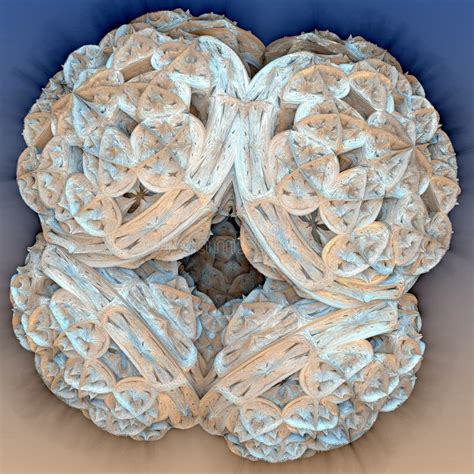The #concepts of #wetware #computing by #arwil
 Armani Willis
Armani Willis
The #concepts of #wetware #computing by #arwil
Presented by Armani Willis, assisted by ai.
Introduction In the rapidly evolving landscape of technology, the concept of wetware computing has emerged as a fascinating intersection between biological systems and computational processes. Unlike traditional hardware or software, wetware refers to the use of biological substrates — particularly living cells and organisms — for processing information and performing computations. This essay explores the principles of wetware computing, its potential applications, and the ethical considerations surrounding this innovative field.
Defining Wetware Computing Wetware computing can be defined as the utilization of biological systems to execute tasks typically performed by computer systems. It encompasses a variety of approaches, from genetically engineered organisms that perform specific functions to neural networks inspired by human brain architecture. In essence, wetware represents a fusion of biology and technology aimed at harnessing the unique capabilities of living organisms.
Mechanisms Behind Wetware Computing At its core, wetware computing relies on several mechanisms:
Biological Processes: Living cells possess intricate biochemical pathways that can be manipulated to create circuits capable of processing information.
Genetic Engineering: Scientists can modify genetic material in organisms (like bacteria) to create programmable "biocomputers" that respond to environmental stimuli or input signals.
Neural Networks: By studying how neurons interact in the brain, researchers are developing models that mimic these processes using biological elements, allowing for advanced computation akin to human thought processes.
Applications of Wetware Computing The potential applications for wetware computing are vast:
Biomedical Engineering: Wetware can be employed in developing smart drug delivery systems where engineered cells target specific diseases while reducing side effects.
Environmental Monitoring: Biological sensors made from modified organisms could detect pollutants or toxins in real-time, leading to more effective environmental protection strategies.
Synthetic Biology: Creating new life forms with tailored capabilities allows scientists to design organisms that can produce biofuels or other sustainable materials efficiently.
Data Storage: Biological molecules like DNA offer immense storage capabilities; encoding data within DNA strands presents an opportunity for unprecedented data density and longevity. Ethical Considerations While the possibilities are exciting, they also raise significant ethical concerns:
Biosafety Risks: The release of genetically modified organisms into ecosystems poses risks that must be carefully managed to avoid unintended consequences.
Bioethics: Questions arise about consent when utilizing biological materials from living beings and addressing issues related to 'playing God' with life forms.
Social Impact: As with many emerging technologies, there is potential for disparities between those who have access to advancements in wetware computing versus those who do not.
Conclusion Wetware computing stands at the forefront of interdisciplinary research combining biology with computation. Its ability to leverage natural processes opens up incredible opportunities across various fields but also necessitates careful consideration regarding ethical implications and safety measures. As we advance toward an increasingly interconnected future between man-made machines and living systems, responsible innovation will be key in ensuring these technologies development in a digital age.
More on the Applications of Wetware Computing
Introduction Wetware computing is a revolutionary field that blends biological systems with computational processes, opening up exciting possibilities for innovation across various sectors. This fusion of biology and technology allows for the development of novel applications that can enhance human capabilities, improve healthcare solutions, and tackle environmental challenges. In this essay, we will explore several key applications of wetware computing that showcase its potential impact on society.
Biomedical Engineering One of the most promising applications of wetware computing lies in biomedical engineering. Researchers are developing genetically engineered cells that can function as "smart" therapeutics. For instance:
Synthetic Biology: Wetware computing enables scientists to create new biological systems capable of producing important biomolecules or pharmaceuticals more efficiently than traditional methods.
Biosensors: Scientists have developed modified organisms (such as bacteria) that can act as sensors to detect pollutants or toxins in the environment. These biosensors provide real-time monitoring of ecosystems, helping authorities respond quickly to contamination events.
Bioremediation: Living organisms engineered through wetware principles can be deployed to clean up contaminated sites by breaking down hazardous substances, thereby restoring ecological balance without harmful chemicals.
Data Storage Solutions As data generation continues to skyrocket in our digital age, conventional storage solutions face limitations in capacity and longevity:
DNA Data Storage: Researchers are exploring ways to encode data within DNA molecules due to their incredible density and durability. With DNA acting as a storage medium, vast amounts of information could be stored in a microscopic space — a game changer for data management!
Artificial Intelligence & Neural Networks Wetware computing draws inspiration from biological neural networks:
Neural Models: By mimicking how neurons communicate within the brain using wet biological substrates, researchers aim to develop advanced AI systems capable of learning and processing information more efficiently than traditional silicon-based computers.
Agricultural Innovations Agriculture stands to benefit tremendously from wetware computing advancements:
Precision Farming: Engineers are creating bioengineered plants that can respond directly to environmental changes (like nutrient availability or drought). These plants could optimize resource use, increasing yield while minimizing waste.
Pest Management: Utilizing modified organisms that attract or deter pests naturally can reduce the need for chemical pesticides, promoting sustainable farming practices.
Conclusion The applications of wetware computing highlight its transformative potential across diverse fields such as medicine, environmental science, data management, artificial intelligence, and agriculture. As we venture further into this interdisciplinary frontier where biology meets computation, it becomes crucial to embrace responsible practices that address ethical considerations while harnessing innovation's power for good. The future holds infinite possibilities with wetware computing at the forefront — let’s make sure we navigate them wisely! 🌍💚 Technologies Behind Wetware Computing and Their Facilities.
Subscribe to my newsletter
Read articles from Armani Willis directly inside your inbox. Subscribe to the newsletter, and don't miss out.
Written by

Armani Willis
Armani Willis
I got my Bachelors Degree in Computer Science from Mercy College, please consult me for tech freelancing, i am also a business market promoter.